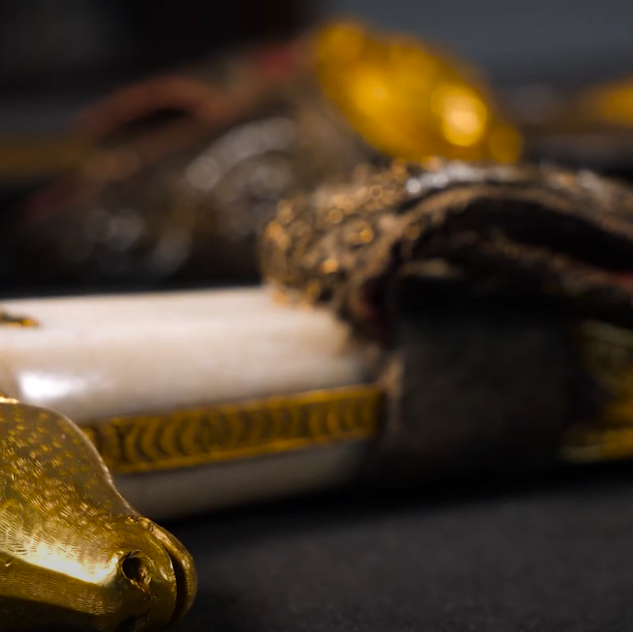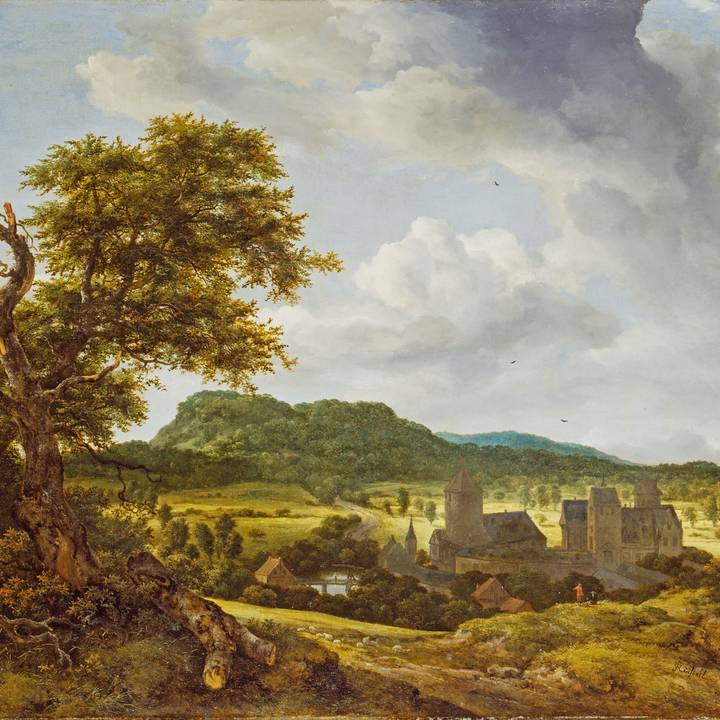FROM THE GUARDED DOMAINS OF IRAN
As part of the Wallace Collection’s ongoing effort to conserve, catalogue and publish its arms and armour from India, Iran and the Ottoman Empire, we recently conserved the textile lining of a rare armour inscribed with the name of an iconic king of Iran: Fath-’Ali Shah Qajar.
During the late eighteenth century, after many decades of conflict and instability, the guarded domains of Iran (mamalik-e mahrusa), which stretched from Dagestan in the north to the Indian Ocean in the south, were reunited by Agha Muhammad Shah Qajar.
This phrase — the guarded domains of Iran — had been used from the early sixteenth century to describe the territorial domains of the Safavid kings, who fostered an Iranian national unity centred around the Persian language and literary corpus, and the Twelver Shi’ite religion. Under Agha Muhammad Shah Qajar and his successors, the term was again used to legitimise the Qajar dynasty and to foster a newly-emerging sense of Iranian nationalism.
When Agha Muhammad Shah was assassinated in 1797, he was succeeded by his nephew Fath-’Ali Shah. Fath-’Ali Shah’s reign marks a turning point in Iranian history. Faced with the difficult task of consolidating both the new territorial borders of Iran and the legitimacy of his own dynasty in the face of Russian imperial ambitions, he set out on an ambitious cultural programme.
A distinctly Qajar visual style emerged across various media, sponsored by Fath-’Ali Shah’s court. His likeness, with his distinctive long beard, appeared on a wide range of objects, including pen-boxes, mirror cases and paintings. Experimentation with new techniques and styles reached a high point across media and Fath-’Ali Shah’s reign saw the birth of a distinctively 'Qajar' visual language.
Fine arms and armour were no exception. By the nineteenth century, traditional arms and armour were no longer at the cutting edge of military technology, and as such their design was largely driven by aesthetic concerns.
Fitted body armours such as our example were a relatively late introduction to Iran, with the earliest examples dating from the middle of the eighteenth century. The surviving examples, however, each richly overlaid with gold in a variety of inventive patterns, speak to the use of such armours in court and religious ceremony.
One such ceremony was the ta’ziya, a dramatic performance similar to a passion play, in which performers commemorated the sacrifice of the Shi’i Imam Husayn and his followers at the battle of Karbala in 680 CE. Likely originating in popular drama far removed from the royal courts, ta’ziya first became part of Iranian court culture in the sixteenth century, during the reign of the Safavid dynasty, who elevated Twelver Shi’ism to a state religion.
Held during the days leading up to the tenth of Muharram, one of the sacred months in Islam, ta’ziya performances and accompanying processions were large spectacles that involved the whole city, and they continue to be one of the most significant events in the Shi’ite religious calendar today.
During the reign of Fath-’Ali Shah, court patronage of such performances returned and possibly even exceeded that of the Safavids. Fine arms and armour were produced in significant numbers for ta’ziya, of which the Wallace Collection has a significant collection.
Often described as 'ceremonial', these fine arms and armour were nevertheless of the highest quality and made with high-carbon 'watered' steel plates. Although fully functional — albeit outdated — as field armours, their first purpose was devotional. They were frequently inscribed with choice quotations from the Qur’an, especially those associated with struggle and eventual victory, or with popular Shi’i prayers, reflecting their use in religious ritual.
A unique armour set dating to the middle of the nineteenth century, now in the Wallace Collection, shows that Muharram commemorations were not strictly limited to the Shi’i population of Iran.
The use of pierced steel and gold overlay, both executed to the highest standard, is in line with the best works from Isfahan of that time period, but the inscription is highly unusual. It is bilingual in Persian and Armenian, and credits the work to the workshop of the Armenian Christian Mkrtic, a resident of the Armenian neighbourhood of New Julfa, in Isfahan.
Curiously, the Armenian date of 1844, written in the same numerals used in Western Europe, has been painstakingly erased from the helmet, suggesting that an unscrupulous nineteenth-century art dealer may have erased it to pass it off as older than it is to a Western collector like the 4th Marquess of Hertford. Apparently with some success, as the set was attributed to the eighteenth century by eminent art historian Guy Francis Laking in 1914.



